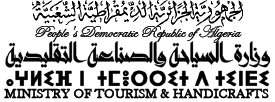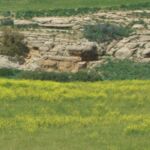The ruins of the state of Rustamiya lie not far from the erased traces of the first independent state of the Maghreb in the year 761 AD. It was known as the state of Rustamiya from its founder Abd al-Rahman Ibn Rustam, which split from the Abbasid Islamic Caliphate during the reign of Abbasid Caliph Abu Jaafar al-Mansur, where it was famous for its palaces, houses and mosques. And the baths and its capital were Tehrt, which was known at that time as a cradle of science, culture and diligence and a center of economy and trade, and only a defensive wall and stone remains and traces of market, buildings and remains of Hammam Rostami. He advanced and took it as his capital, so he rebuilt it and built its strong castle, important arsenal, supply stores and impregnable walls, including an arms factory, a mill powder, a mint house and a home for the emirate between the years 1835 AD and 1841 AD (Fellowship of Prince Abdul Qadir Taghin (Transfer of Prince Abdul Qadir). Its capital to the brotherhood, thus introducing the concept of mobile capital , which contains many facilities including tents for soldiers and residents, hospital, market..etc, which was discovered by the French in 1843 AD as a result of a slander, where a Most of its inhabitants and some soldiers were kept secret in the absence of the Emir Abd al-Qadir.In addition to archaeological and cultural sites, the State has memorial sites and monuments commemorating the stages of the national movement and the first November Revolution, where visitors can nt stand on more than 23 martyr cemeteries across the communes and 59 memorials, in addition to detention centers and military prisons.







